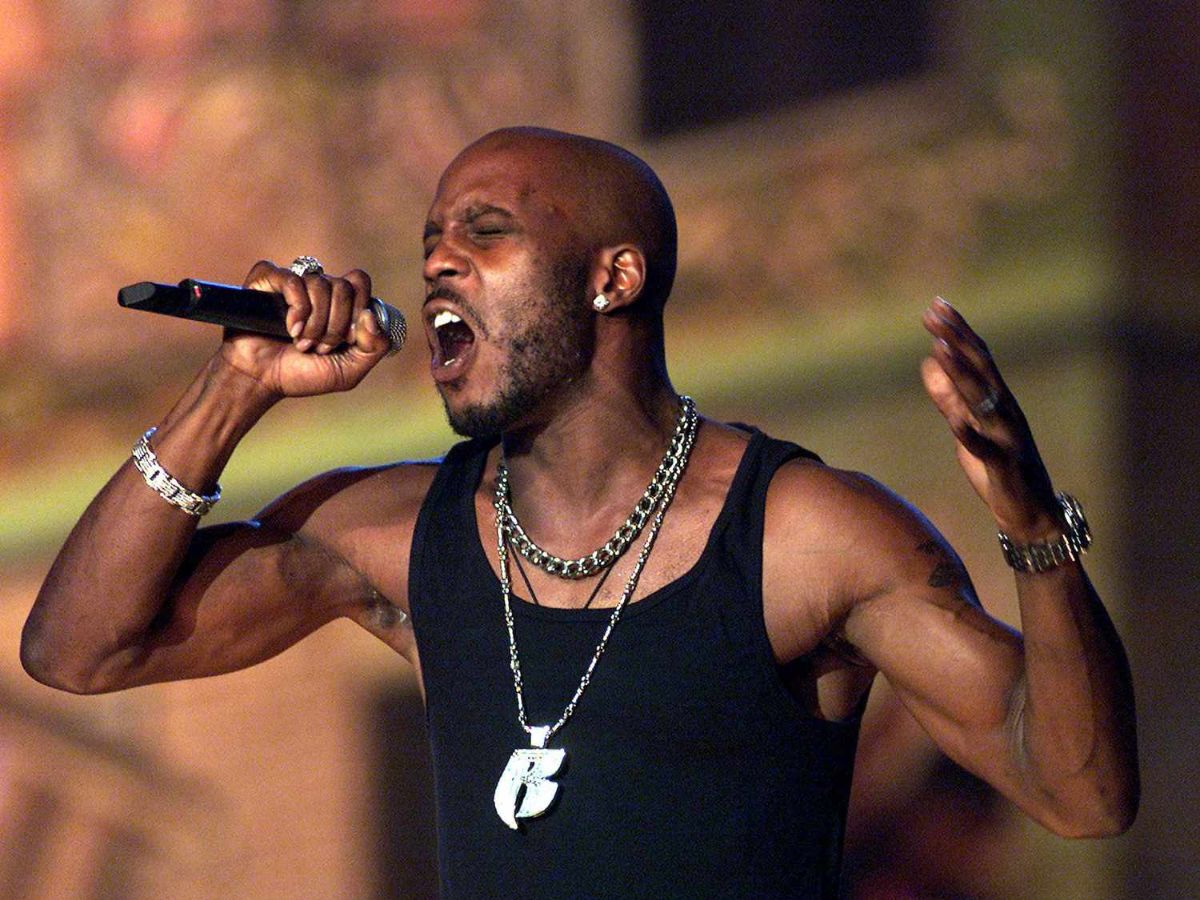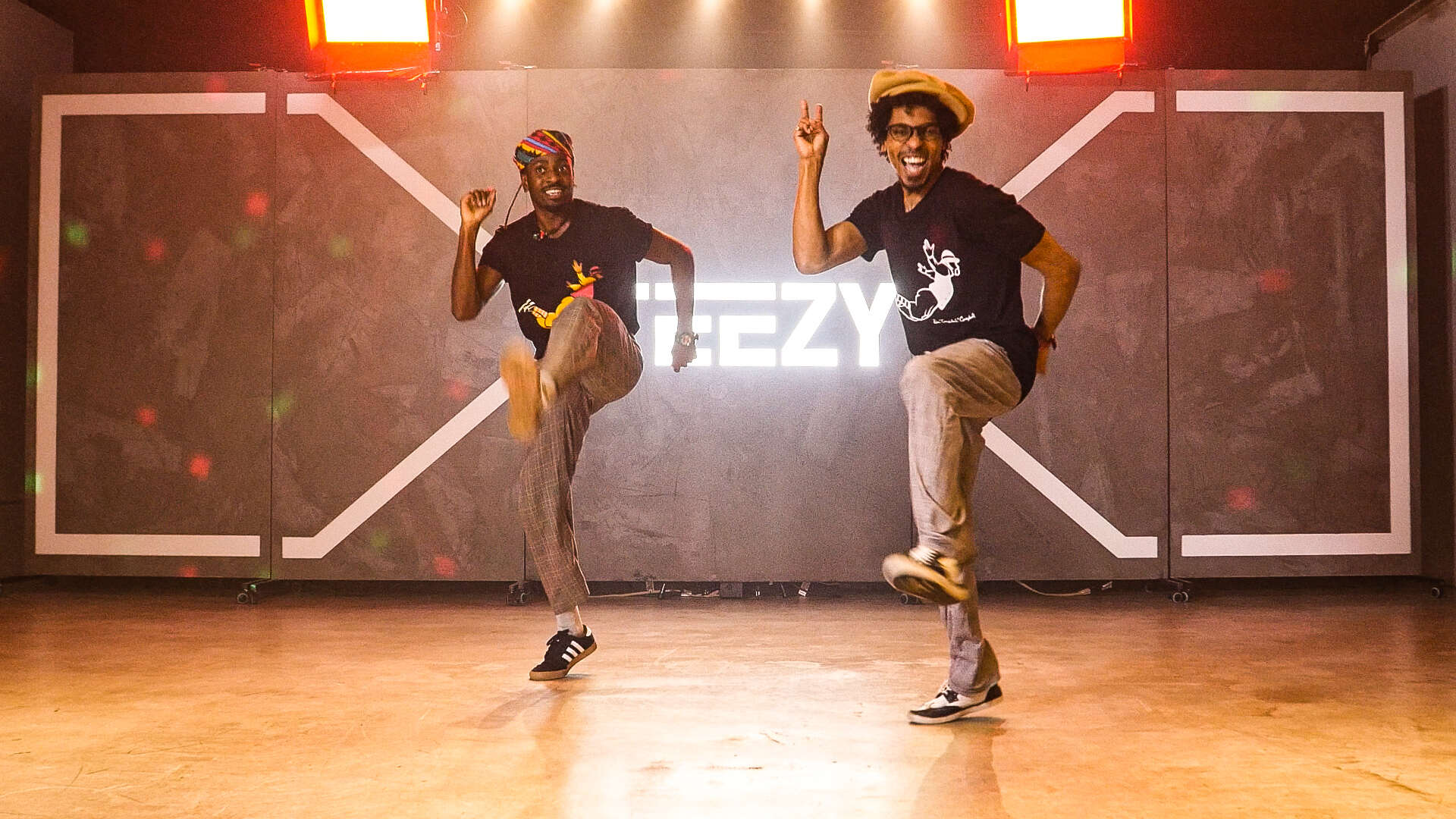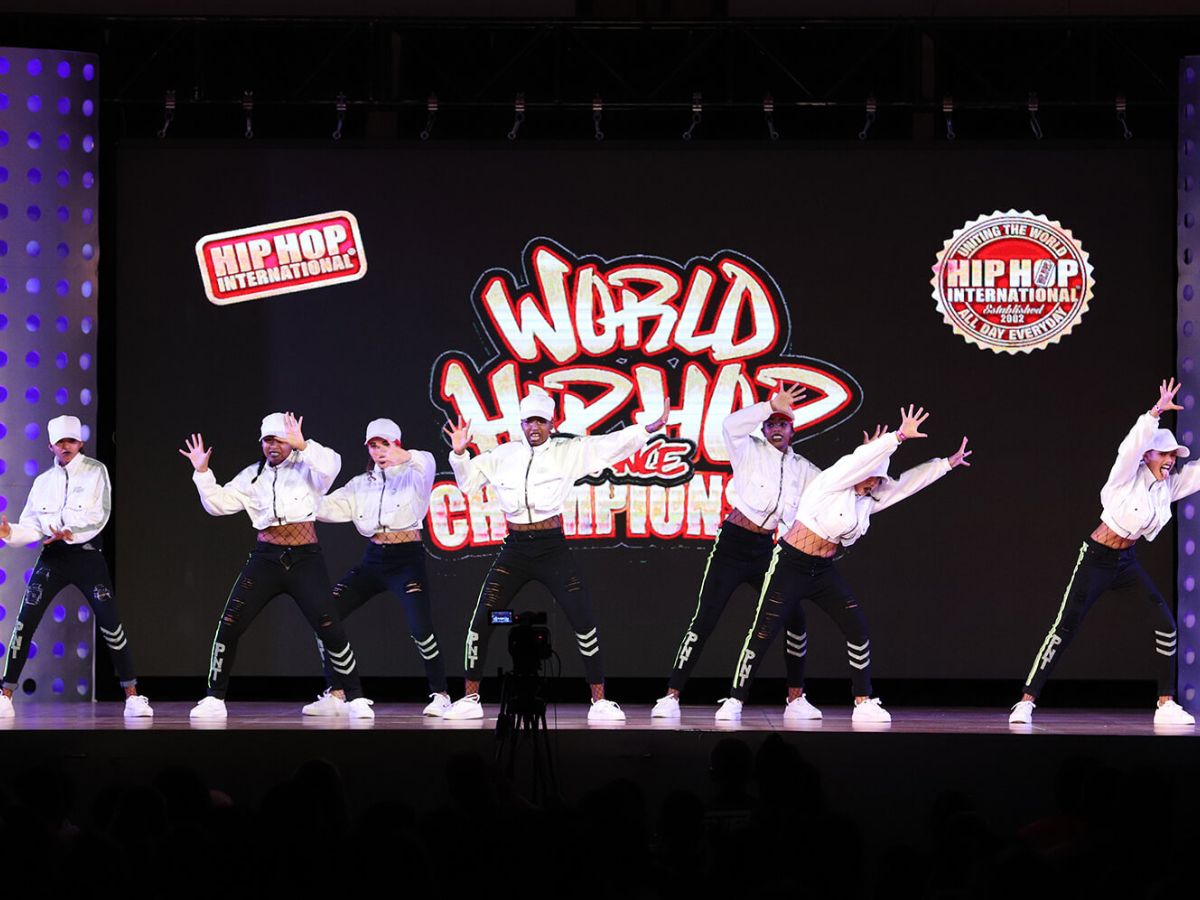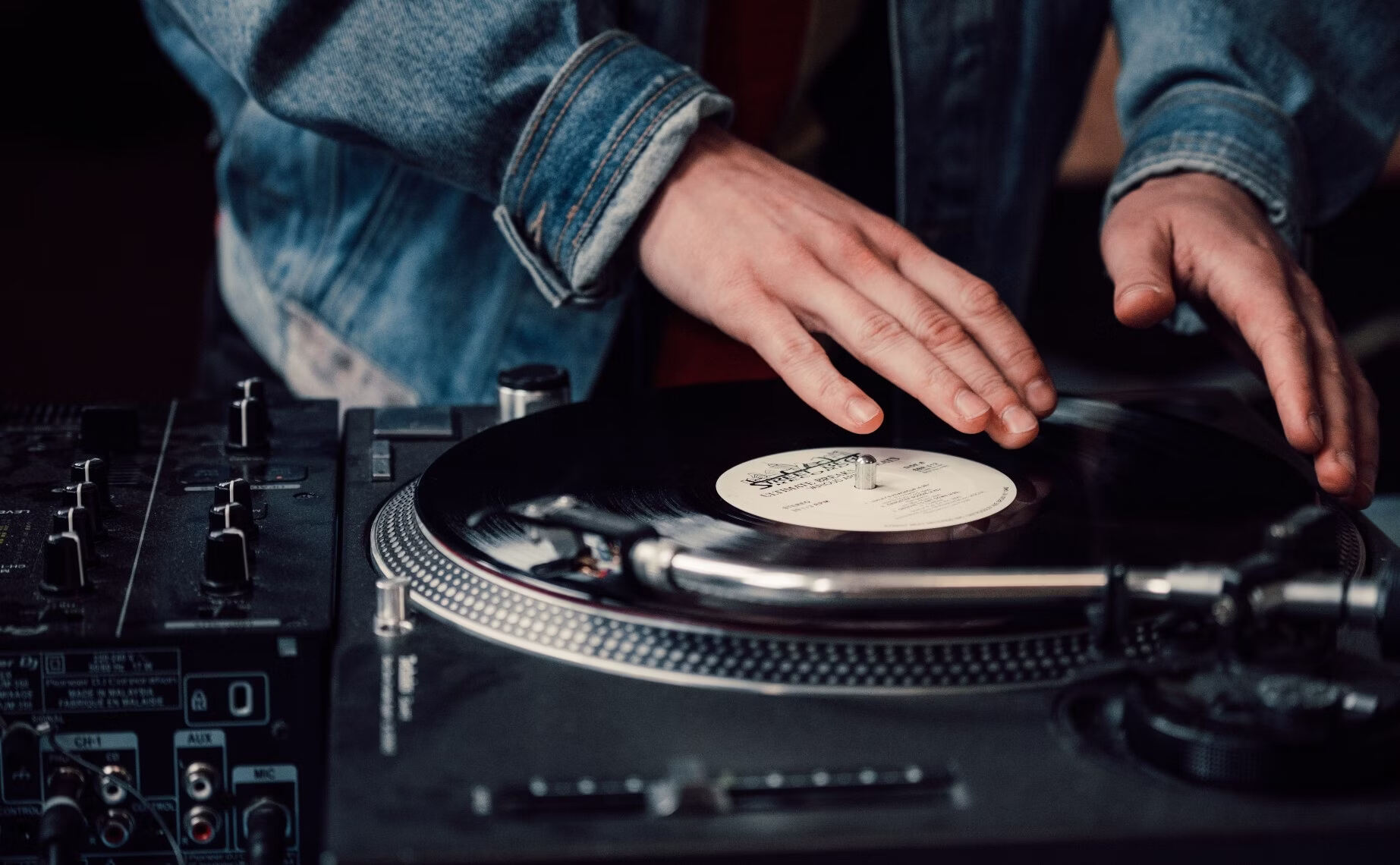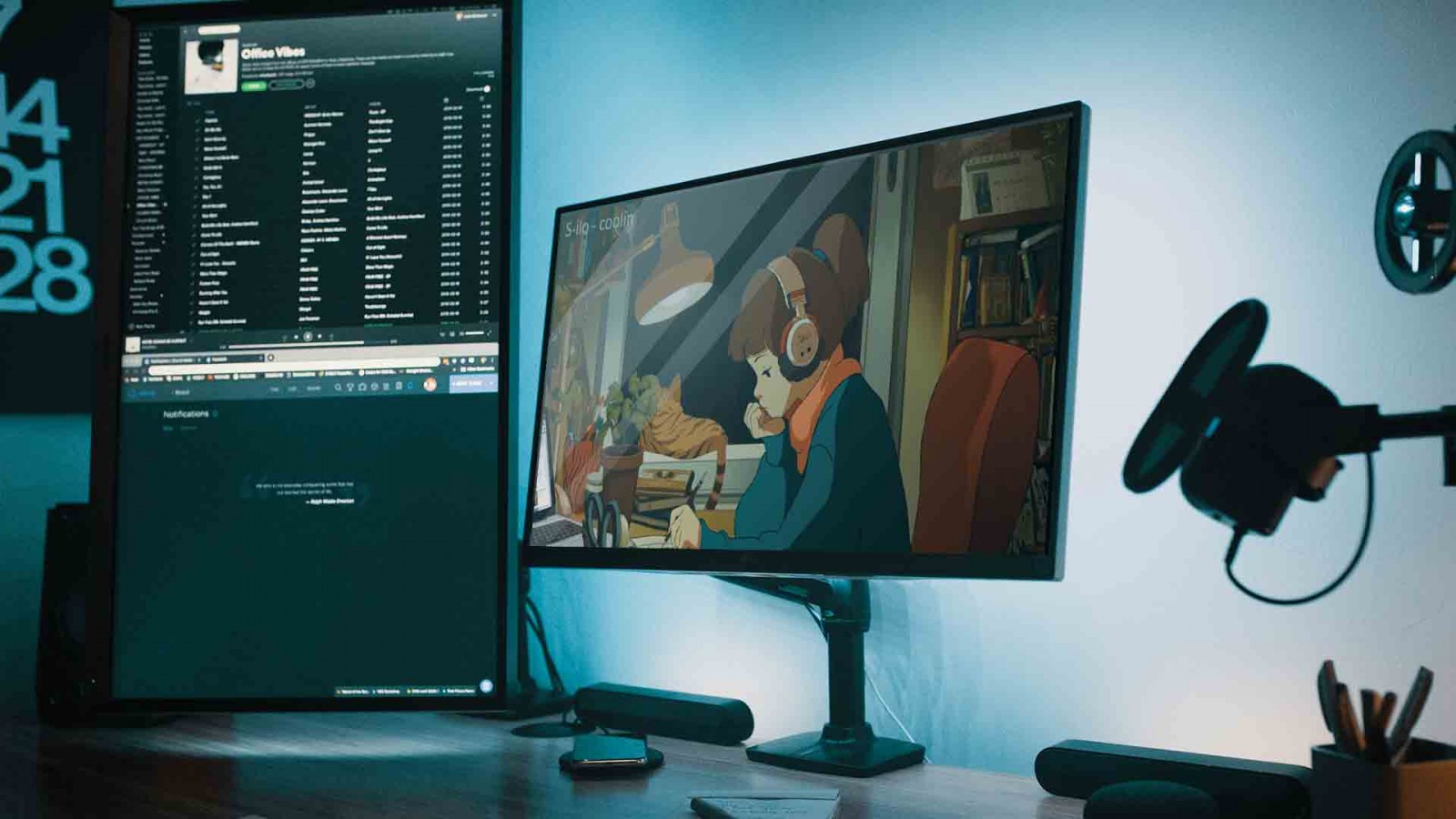

Hip Hop
What Is Lo-Fi Hip Hop
Modified: January 22, 2024
Discover the chilled vibes and nostalgic beats of Lo-Fi Hip Hop. Explore the origins, stylistic elements, and influential artists in this genre
(Many of the links in this article redirect to a specific reviewed product. Your purchase of these products through affiliate links helps to generate commission for AudioLover.com, at no extra cost. Learn more)
Table of Contents
Introduction
Lo-fi hip hop has become a prominent and beloved genre in recent years, captivating listeners with its nostalgic and laid-back sound. With its roots deeply entrenched in hip hop culture, Lo-fi hip hop offers a unique and refreshing take on the genre, combining elements of jazz, funk, and soul with dusty vinyl samples and lo-fi production techniques.
Lo-fi, short for “low fidelity,” refers to the deliberate use of low-quality audio recordings or production techniques to create a distinct sound. This intentional degradation of sound quality adds a layer of warmth and authenticity to the music, evoking a sense of nostalgia and charm that is highly sought after by listeners.
Lo-fi hip hop is often characterized by its relaxed and laid-back beats, often accompanied by soulful melodies, smooth jazz samples, and hypnotic lo-fi effects such as vinyl crackle and tape hiss. This unique blend creates a soothing and introspective atmosphere, making it the perfect soundtrack for relaxation, study, or simply winding down after a long day.
One of the defining features of lo-fi hip hop is its emphasis on creating a lo-fi aesthetic. This is not only reflected in the music but also in the accompanying visuals. Many lo-fi hip hop producers and artists incorporate vintage-inspired artwork, nostalgic anime scenes, and lo-fi visuals inspired by VHS tapes and retro television screens. These visuals further enhance the overall experience and immerse the listener in a world of nostalgia and tranquility.
Lo-fi hip hop gained significant popularity through online platforms such as YouTube and streaming services like Spotify. The emergence of dedicated channels and playlists, such as the popular “ChilledCow” live stream, has given lo-fi hip hop a dedicated and ever-growing fanbase. Its soothing and unobtrusive nature has made it a favorite choice for background music while studying, working, or simply relaxing.
In addition, lo-fi hip hop has also made its way into popular culture, with major artists incorporating lo-fi elements into their music. It has become a staple in the film and television industry, often used to create a sense of nostalgia or to set a specific mood. The genre’s influence extends beyond the world of music and has permeated various creative mediums.
In this article, we will delve deeper into the origins, characteristics, and influence of lo-fi hip hop, exploring its impact on popular culture and discussing its future in the ever-evolving landscape of music.
The Origins of Lo-Fi Hip Hop
The origins of lo-fi hip hop can be traced back to various artists and movements that paved the way for its development. One of the key influencers of this genre is the underground hip hop scene of the 1990s, which prioritized raw and unpolished production values.
The lo-fi aesthetic can be attributed to the use of sampling, a technique widely popularized by legendary hip hop producers such as J Dilla and Madlib. These producers sought out obscure and dusty vinyl records, extracting snippets of soulful melodies and gritty drum breaks to create a unique sonic atmosphere. This sampling technique, often resulting in low-fidelity sound quality, became a defining characteristic of lo-fi hip hop.
Another significant influence on the development of lo-fi hip hop was the rise of boom-bap production in the 1990s. This subgenre of hip hop, characterized by its heavy emphasis on layered drum beats and soulful samples, laid the foundation for the rhythmic and melodic elements that would become synonymous with lo-fi hip hop.
The advent of digital audio workstations (DAWs) and home recording technology in the late 1990s and early 2000s also played a crucial role in the emergence of lo-fi hip hop. These advancements made it possible for artists to experiment with unconventional production techniques, such as purposely degrading sound quality or adding vinyl crackle and tape hiss to their tracks.
One of the key figures that popularized lo-fi hip hop in the modern era is Nujabes, a Japanese producer known for his signature blend of jazz-infused hip hop beats. Nujabes’ iconic album, “Modal Soul,” released in 2005, showcased his mastery of blending lo-fi production techniques with jazz influences, creating a tranquil and introspective sound that resonated with listeners worldwide.
In recent years, the rise of internet culture and the accessibility of music production software has led to the proliferation of lo-fi hip hop producers on platforms like SoundCloud, Bandcamp, and YouTube. Online communities devoted to the genre, such as the “lofi hip hop radio” livestream on YouTube, have provided a dedicated space for artists and fans to connect and share their love for this stripped-down, melancholic sound.
Overall, the origins of lo-fi hip hop can be traced back to the underground hip hop scene of the 1990s, the influence of boom-bap production, and the advancements in sampling and digital audio technology. These factors, combined with the artistic visions of pioneering producers like Nujabes, have led to the development and popularization of this unique genre.
Characteristics of Lo-Fi Hip Hop
Lo-fi hip hop possesses distinct characteristics that set it apart from other subgenres of hip hop. From its production techniques to its mood-setting elements, these defining features contribute to the genre’s unique and captivating sound.
One of the prominent characteristics of lo-fi hip hop is its relaxed and laid-back vibe. The beats are often slow to mid-tempo, creating a sense of calmness and tranquility. This relaxed pace allows the listener to enter a state of introspection and contemplation.
The use of sampling is a key aspect of lo-fi hip hop. Producers dig deep into crates of vinyl records, searching for obscure, often forgotten, soulful melodies and drum breaks. These samples are then chopped, looped, and rearranged to form the backbone of lo-fi hip hop beats. The raw and unpolished quality of these samples adds to the gritty and nostalgic atmosphere of the genre.
Lo-fi hip hop is renowned for its use of lo-fi production techniques. These techniques intentionally degrade the audio quality, mimicking the sound of vinyl records or worn-out cassette tapes. This includes adding vinyl crackle, tape hiss, and subtle distortion to create a warm, vintage aesthetic. These imperfections enhance the nostalgic and melancholic nature of the music.
Jazz influences play a significant role in shaping the sonic landscape of lo-fi hip hop. The genre often incorporates smooth jazz samples, creating a fusion of hip hop and jazz elements. These jazzy melodies add depth and richness to the music, contributing to the overall mellow and melodic sound.
Lo-fi hip hop is also characterized by its minimalist approach. The beats are kept relatively simple, focusing on the groove and rhythm rather than intricate production. This simplicity allows the listener to immerse themselves in the music without distraction.
Another defining characteristic of lo-fi hip hop is the use of atmospheric elements. Ambient textures, such as rain sounds, distant conversations, or field recordings, are often incorporated into the tracks. These elements further enhance the immersive and dream-like quality of the music.
Lyrically, lo-fi hip hop often explores themes of introspection, self-reflection, and nostalgia. The lyrics, when present, are usually introspective and poetic, providing a sense of emotional depth and vulnerability.
Overall, the combination of relaxed beats, jazz influences, lo-fi production techniques, and atmospheric elements creates a distinct and captivating sound that defines lo-fi hip hop. These characteristics contribute to the genre’s widespread appeal and its ability to provide a soothing, nostalgic, and introspective experience for listeners.
The Influence of Lo-Fi Hip Hop
Lo-fi hip hop has made a significant impact on the music industry and popular culture as a whole. Its unique blend of nostalgic sounds, relaxed beats, and introspective themes has resonated with a wide audience and inspired a new wave of artists and producers.
One of the key influences of lo-fi hip hop is its impact on contemporary hip hop production. Many mainstream artists have incorporated lo-fi elements into their music, using techniques such as vinyl sampling, tape saturation, and lo-fi effects to create a vintage and intimate aesthetic. This influence can be heard in the works of artists like Drake, Kanye West, and Tyler, the Creator, who have embraced lo-fi production as a means of capturing a distinct mood and atmosphere.
Furthermore, the popularity of lo-fi hip hop has sparked a resurgence of interest in vinyl records and the art of sampling. Aspiring producers and DJs now seek out and collect vinyl records in search of rare and obscure samples, following in the footsteps of the pioneers of the genre. The resurgence of vinyl culture owes a great deal to the influence of lo-fi hip hop.
Lo-fi hip hop has also had a profound impact on the online music streaming landscape. Dedicated lo-fi hip hop channels and playlists on platforms like YouTube and Spotify have gained millions of followers, captivating listeners with their carefully curated selections of soothing beats and relaxation-inducing vibes. These channels have become a go-to destination for those looking for background music while studying, working, or unwinding.
Furthermore, lo-fi hip hop has extended its influence beyond the realm of music. The genre has become intertwined with the world of visual aesthetics, inspiring a wave of artists and graphic designers to embrace lo-fi and vintage-inspired visuals. The use of retro anime imagery, VHS-style visuals, and nostalgic artwork has become strongly associated with the genre, creating a cohesive and immersive experience for listeners.
Lo-fi hip hop has also made its mark in popular culture beyond the music scene. It has become a popular choice for film and television soundtracks, often used to evoke a sense of nostalgia or create a mellow atmosphere. Its tranquil and introspective mood has made it a perfect fit for scenes that require a reflective or dream-like ambiance.
Overall, the influence of lo-fi hip hop can be seen in the way contemporary music is produced, the resurgence of vinyl culture, the popularity of online lo-fi hip hop channels, and its integration into visual aesthetics and popular media. It has brought a new dimension to hip hop and has created a lasting impact on the creative landscape.
Lo-Fi Hip Hop in Popular Culture
Lo-fi hip hop has gained substantial recognition and visibility in popular culture, transcending its origins as a niche genre. Its unique sound and ambiance have permeated various creative mediums, making it a recognizable presence in film, television, advertising, and even fashion.
One notable area where lo-fi hip hop has made a significant impact is in the world of film and television soundtracks. The genre’s laid-back and introspective vibe has made it a popular choice for directors and producers looking to evoke a specific mood or establish a nostalgic atmosphere. Whether it’s a scene set in a coffee shop, a study montage, or a contemplative moment of reflection, lo-fi hip hop often provides the perfect sonic backdrop.
Lo-fi hip hop has also found its way into the world of advertising and commercials. The genre’s calming and unobtrusive nature has made it an ideal choice for brands looking to create a relaxed and relatable atmosphere in their advertisements. From lifestyle brands to tech companies, the use of lo-fi hip hop has become a trendy and effective way to connect with audiences on an emotional level.
In recent years, the fashion world has also embraced the aesthetic and vibe of lo-fi hip hop. The genre’s association with vintage and nostalgic elements has influenced fashion trends, leading to the rise of lo-fi-inspired clothing styles. From oversized hoodies and bucket hats to retro sneaker designs, lo-fi hip hop has left its mark on the streetwear culture.
Additionally, the visual aesthetic of lo-fi hip hop has become a significant part of its presence in popular culture. Many lo-fi hip hop channels and livestreams on platforms like YouTube feature accompanying visuals that include nostalgic anime scenes, VHS-style effects, and vintage-inspired artwork. These visuals enhance the listening experience by immersing the audience in a visually cohesive and captivating environment.
Furthermore, the rise of live streaming platforms has given lo-fi hip hop a unique opportunity to connect directly with fans and create a sense of community. The popular “lofi hip hop radio” livestream on YouTube, for example, features a continuous stream of lo-fi hip hop music accompanied by a visual feed, creating a virtual space where listeners can interact and chat while enjoying the music.
Overall, lo-fi hip hop has transcended its musical roots and become a cultural phenomenon. Its presence in film, television, advertising, fashion, and the online world has solidified its position as a recognizable and influential genre in popular culture.
The Future of Lo-Fi Hip Hop
The future of lo-fi hip hop is both promising and intriguing. As the genre continues to gain popularity and evolve, there are several avenues and possibilities that lie ahead.
One aspect that is likely to shape the future of lo-fi hip hop is its integration with emerging technology. As advancements in music production and streaming platforms continue to evolve, artists will have access to even more tools and resources to create and share their music. This could lead to further experimentation with lo-fi production techniques, allowing for new and innovative sounds to emerge within the genre.
Collaborations between lo-fi hip hop producers and artists from different genres are also a possibility in the future. The fusion of lo-fi elements with other styles such as electronic music, alternative rock, or R&B can result in refreshing and inventive sounds. These collaborations could potentially expand the reach and appeal of lo-fi hip hop beyond its existing audience.
With the rise of virtual reality and augmented reality technologies, there is also potential for immersive lo-fi hip hop experiences. Imagine attending a virtual concert or experiencing a lo-fi hip hop performance in a digital environment. This could create new ways for artists and listeners to connect and immerse themselves in the world of lo-fi hip hop.
Furthermore, the influence of lo-fi hip hop on visual aesthetics is likely to continue to grow. As the genre becomes more mainstream, we can expect to see further incorporation of lo-fi-inspired visuals in music videos, album artwork, and live performances. This visual aspect will enhance the overall experience for the audience and contribute to the further development of the genre’s identity.
Another interesting direction for lo-fi hip hop is its potential to explore and incorporate cultural influences from around the world. As the genre continues to gain global recognition, artists may infuse their music with samples, melodies, and rhythms from various cultural traditions, providing a fresh perspective and expanding the sonic palette of lo-fi hip hop.
While the future of any genre is uncertain, one thing that is clear is that the demand for soothing and introspective music is unlikely to wane. The mellow and nostalgic qualities of lo-fi hip hop provide listeners with a sense of calmness and escapism, which will continue to attract audiences seeking relaxation and reflection.
Overall, the future of lo-fi hip hop is filled with possibilities. As technology advances, collaborations take place, and new artistic expressions emerge, lo-fi hip hop will undoubtedly continue to evolve organically, captivating both existing fans and welcoming new ones into its soothing and nostalgic world.
Conclusion
Lo-fi hip hop has emerged as a captivating and influential genre, captivating listeners with its nostalgic sound and laid-back vibes. With its roots deeply planted in hip hop culture, lo-fi hip hop has evolved into a distinct artistic expression that blends elements of jazz, soul, and funk with lo-fi production techniques.
From its origins in the underground hip hop scene of the 1990s to its current prominence in popular culture, lo-fi hip hop has left an indelible mark on the music industry. Its influence can be felt in the production styles of mainstream artists, the resurgence of vinyl culture, and the popularity of online lo-fi hip hop channels and playlists.
Characterized by its relaxed beats, soulful samples, and lo-fi production aesthetics, lo-fi hip hop provides a soothing and introspective listening experience. Its mellow and melancholic sound has proven to have a universal appeal, attracting a dedicated fanbase and finding its way into various creative mediums.
The future of lo-fi hip hop holds exciting possibilities for further experimentation and development. As technology continues to advance, artists will have new tools and resources to push the boundaries of the genre. Collaboration with artists from different genres, integration with virtual reality and augmented reality technologies, and the infusion of global cultural influences are all avenues that may shape the future of lo-fi hip hop.
Regardless of what lies ahead, one thing is certain: lo-fi hip hop will continue to provide a sanctuary for listeners seeking relaxation, introspection, and a connection to the past. Its nostalgic and intimate qualities resonate deeply with audiences, making it a timeless genre that will continue to captivate and inspire for years to come.


